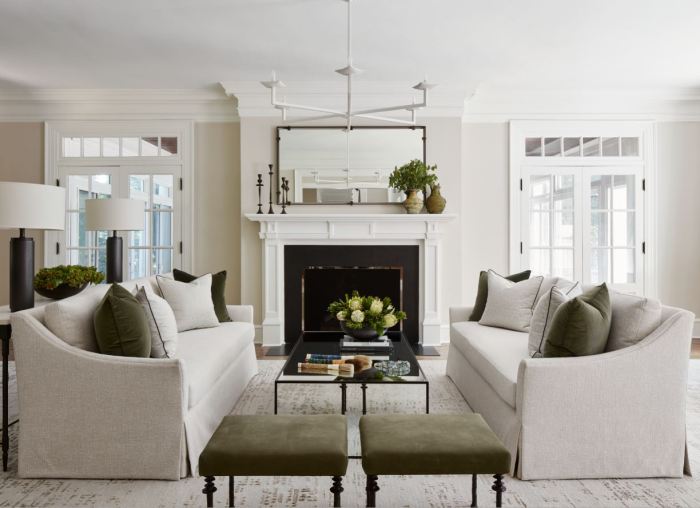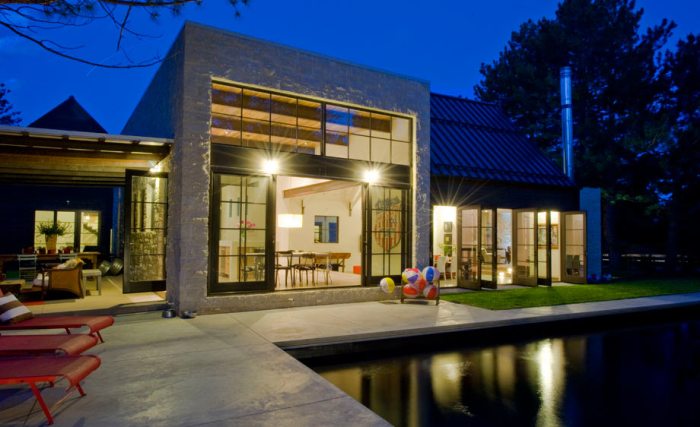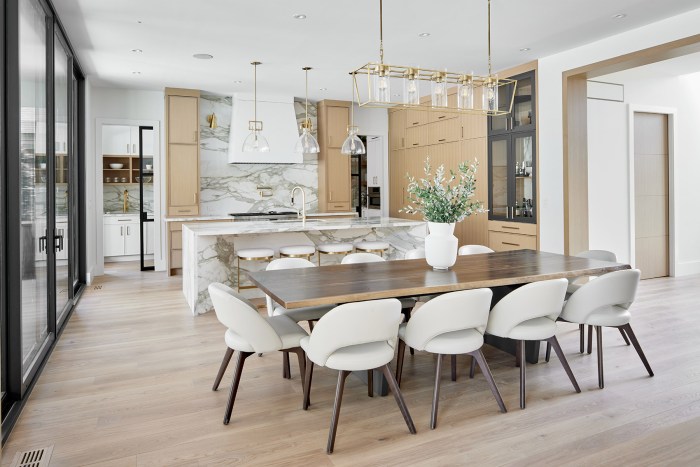Traditional Meets Contemporary in Hybrid Home Designs: A Fusion of Timeless Elegance and Modern Innovation
Exploring the intersection of traditional and contemporary elements in hybrid home designs offers a fascinating glimpse into the evolution of architectural aesthetics. This captivating blend of old-world charm and cutting-edge design principles creates a harmonious balance that resonates with homeowners seeking a unique living experience.
As we delve deeper into the intricate fusion of traditional and contemporary elements, we uncover the artistry behind seamlessly blending classic design features with modern innovations to create stunning living spaces that transcend time and trends.
Traditional Elements in Hybrid Home Designs
Traditional design elements play a crucial role in hybrid home designs, blending the charm of the past with the functionality of modern aesthetics. These elements add character and warmth to contemporary spaces, creating a unique fusion of old and new.
Key Traditional Design Elements
Traditional design elements such as exposed wooden beams, intricate moldings, ornate ironwork, and reclaimed brick or stone are commonly integrated into hybrid home designs. These elements bring a sense of history and craftsmanship to modern interiors, adding texture and visual interest.
- Exposed Wooden Beams: These beams, often seen in traditional cottages or farmhouses, can be incorporated into contemporary spaces to add a rustic touch and architectural detail.
- Reclaimed Brick or Stone: Using reclaimed materials in modern homes not only adds a sense of sustainability but also infuses a sense of history and authenticity into the space.
- Intricate Moldings: Traditional crown moldings or wainscoting can be modernized by painting them in crisp white or bold colors to create a striking contrast against minimalist interiors.
- Ornate Ironwork: Ironwork details like stair railings or light fixtures can be reinterpreted in sleek, contemporary designs to blend old-world charm with modern sensibilities.
Contemporary Features in Hybrid Home Designs

In hybrid home designs, contemporary features play a crucial role in blending modern elements with traditional aesthetics, creating a unique and functional living space.
Modern Architectural Trends in Hybrid Homes
Modern architectural trends often integrated into hybrid home designs include:
- Open floor plans that enhance the flow of space and natural light.
- Minimalist design elements such as clean lines and simple color palettes.
- Large windows and glass walls that bring the outdoors in and maximize natural light.
Integration of Smart Home Systems
Technologies like smart home systems are seamlessly combined with traditional aesthetics in hybrid designs to enhance convenience and efficiency. This integration allows homeowners to control various aspects of their homes, such as lighting, temperature, and security, through their smartphones or voice commands.
Role of Sustainability in Contemporary Elements
Sustainability and eco-friendly practices play a significant role in the contemporary elements of hybrid homes. Features like energy-efficient appliances, solar panels, and green building materials are commonly incorporated to reduce the environmental impact of the home and promote a greener lifestyle.
Balancing Traditional and Contemporary Aesthetics
When it comes to designing a hybrid home that blends traditional and contemporary elements, achieving a harmonious balance is key. By carefully integrating both styles, homeowners can create a unique and visually appealing living space that reflects their personal taste and style.
Strategies for Achieving Balance
One effective strategy for balancing traditional and contemporary aesthetics is to focus on a few key elements from each style rather than overwhelming the space with too many conflicting features. For example, incorporating traditional architectural details like crown molding or wainscoting alongside modern furniture and fixtures can create a cohesive look.
Visual Impact of Dominant Features
- Traditional Features: Dominant traditional features such as exposed wooden beams or a brick fireplace can add warmth and character to a space, creating a cozy and inviting atmosphere.
- Contemporary Features: On the other hand, dominant contemporary features like sleek lines, minimalistic design, and high-tech appliances can give a space a more modern and sophisticated feel.
Tips for Homeowners
For homeowners looking to incorporate both traditional and contemporary elements into their living spaces, it's essential to start with a clear vision of the overall aesthetic they want to achieve. Mixing and matching styles can be done successfully by choosing pieces that complement each other in terms of color, texture, and scale.
Functional Considerations in Hybrid Home Designs

In hybrid home designs, it is crucial to ensure that traditional design elements are not just aesthetically pleasing but also functional in a modern context. This requires architects and designers to carefully adapt traditional features to meet contemporary functional needs while maintaining the charm of the original design.
Adapting Traditional Design Elements for Modern Functionality
- One example of adapting traditional design elements is incorporating built-in storage solutions into traditional architectural features. For instance, window seats can be transformed into storage benches to maximize space in a modern home.
- Another innovative solution is integrating smart home technology seamlessly into traditional designs. This could involve hiding smart thermostats or lighting controls within traditional millwork to maintain the aesthetic appeal of the space.
- Traditional fireplaces can also be updated to include energy-efficient features such as gas inserts or eco-friendly materials, blending the charm of a traditional fireplace with modern functionality.
Challenges in Merging Traditional and Contemporary Features
- One of the main challenges architects face is balancing the structural integrity of traditional design elements with the demands of modern construction techniques. Ensuring that traditional features are not compromised while incorporating contemporary materials can be a delicate process.
- Harmonizing the visual appeal of traditional and contemporary elements is another challenge. It requires careful consideration of color palettes, textures, and proportions to create a cohesive design that respects both styles.
- Functionality can sometimes be sacrificed in the pursuit of aesthetics. Finding the right balance between preserving traditional charm and meeting modern functional needs without compromising either aspect is a constant challenge in hybrid home designs.
Final Summary

In conclusion, the marriage of traditional and contemporary aesthetics in hybrid home designs opens up a world of possibilities for those looking to create a space that is both timeless and relevant. By striking a delicate balance between the past and the present, homeowners can enjoy the best of both worlds, resulting in truly exceptional living environments that inspire and delight.
Common Queries
Can traditional and contemporary elements coexist harmoniously in hybrid home designs?
Yes, by carefully integrating key elements from both styles and focusing on creating a cohesive design narrative, traditional and contemporary aesthetics can beautifully complement each other in hybrid homes.
How can homeowners maintain the integrity of traditional design elements in a contemporary setting?
Homeowners can preserve the authenticity of traditional elements by using them as focal points in the design and incorporating them in a way that enhances the overall aesthetic appeal of the space.
Are there any challenges associated with merging traditional and contemporary features in home design?
One common challenge is finding the right balance between the two styles to ensure a cohesive and visually appealing result. Designers must carefully navigate this balance to create a harmonious living environment.




